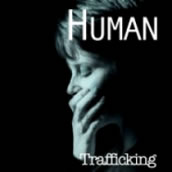
Trafficking
Human trafficking is the recruitment, transportation, harbouring, or receipt of people for the purposes of slavery, forced labor, and servitude. It is the fastest growing criminal industry in the world.
The following letter is from Good Shepherd Sister Helene Hayes on her trip to Saipan in January 2009.
Dear Sisters,
lives in abundance."I've survived my eighteen and a half hour plane trips to and from Saipan (temperature 85 degrees!) and thought I would share a brief description of my experience there. My purpose in going to Saipan was to work on an evaluation of the Guma' Esperansa program (meaning "House of Hope") for trafficked persons funded by the U.S. Department of Justice/Office of Victims of Crime. The program is sub-contracted with the U.S. Conference of Catholic Bishops/ Migration and Refugee Services. Saipan is a small island in the middle of the Northern Pacific Ocean (12.5 miles long, 5.5 miles wide) population, 69,000 persons - the majority of which are foreign contract workers, many of them from the Philippines, China, Thailand and Korea. Saipan is the seat of government for the Commonwealth of Northern Mariana Islands (CNMI), a three hundred mile archipelago of 14 islands, of which Saipan is the largest. The CNMI, a US territory, is considered to be a "hot bed" of human trafficking perhaps due to it's proximity to Asia and the fact that it has had its own immigration and labor laws. The influx of guest workers allows traffickers to hide victims of human trafficking in plain sight of the general population. However, in June of '09 the borders will be federalized by teh US government, hopefully reversing this situation to some degree. I stayed with Sr. Stella Mangona, RGS, of the Mid North American Province, who works at Guma' Esperansa as a group and individual Counselor and who also opens her home and her heart to the Philippine community and the women and girls from the program.
In the process of the evaluation, an On-Island Consultant and I (the Off-Island Consultant) met with three groups of Philippine girls and women who have been trafficked and were clients of Guma' Esperansa who now live, work or are in search of work in the broader community and continue to receive services from Guma' Esperansa. In the Focus Group Discussion we asked the women how their lives had changed as a result of being in the program. One young Philippine woman raised her hand and said, "We were dead. You brought back to life. You are helping us to rebuild our lives in abundance." Many of the girls have received their T Visas under the Trafficking Victims Protection Act of 2000 and are in the process of relocating to the States or to Guam. The program has been in existence for 2 years and has helped 62 women survivors of sexual trafficking and 1 man from India who is a victim of labor trafficking. They are in need of a host of services; housing, medical care, food, translation services, counseling, legal and employment assistance.
In the Spring, I will meet with the On-Island Consultant, a Japanese young woman named Keiko here in Marlborough to complete our work of analyzing data from our 4 surveys; Client Satisfaction, Human Trafficking Intervention Coalition, Staff Self-Evaluation, Program Director Input and the results of our 4 Focus Group Discussions.
Saipan is a suffering community due to its deep level of poverty and an unemployment rate that rises as high as 35%. It is also an island of enormous natual beauty and promise. Please keep all the trafficking survivors and those who work so zealously with them in your good prayers.
Thank you and love,
Helene
To read a more stories of Sister Helene Hayes research you may read the original article from Good Shepherd News No. 181, November 2005.
